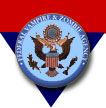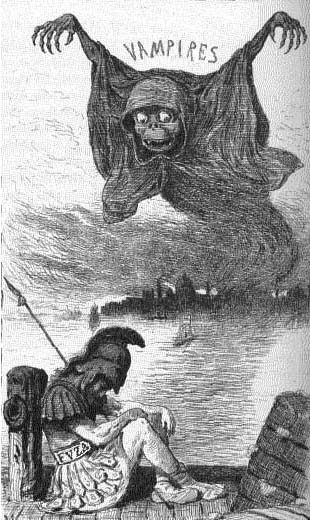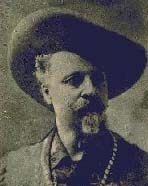

Famous Cases | Historical Tales | Vampires | Zombies
 |  |
Famous Cases | Historical Tales | Vampires | Zombies |
 |
| "Your tax dollars at work" A 1901 editorial cartoon reflects public opinion of the FVZA |
As the Twentieth Century dawned, the reputation of the FVZA was lodged somewhere between those of gangsters and communists. The Agency had become a dumping ground for cronies and hacks and had done little to stem the growth of the undead in America. In 1903, President Theodore Roosevelt installed Hilton Dickerson as Director of the FVZA, and the energetic young man began working against all odds to clean up the Agency. But ultimately, it was the heroism of one FVZA unit operating in a foreign land that changed the Agency's reputation and made it a place where honorable young men and women were proud to go to work.
Background: From the time Spanish explorer Balboa crossed the narrow isthmus of Panama and spotted the Pacific Ocean, men had envisioned building a canal there to join the Atlantic and Pacific Oceans and save ships from having to make the treacherous 12,000-mile journey around South America. The first legitimate attempt was launched in 1850 by the great French engineer Ferdinand de Lesseps. The Frenchman had a solid plan and plenty of investors, but his attempt was ultimately undone when much of his work force of Caribbean islanders abandoned the project, claiming that the jungles around the work zone were haunted by zombies.
 |
| Canal workers, 1907 |
Work on the canal was slow and complicated by brutal heat, landslides and voracious insects. The bulk of the work was done by laborers shipped in from the Caribbean island of Barbados. The men worked 14-hour days and slept in makeshift villages in the jungle. Despite the harsh conditions, the work moved forward, inch by inch.
Incident: Sometime in June of 1907, canal workers started disappearing. The losses were initially chalked up to desertion, until one morning when a terrified man stumbled onto the work site with a large chunk of his shoulder missing. The man claimed his camp had been set upon by a pack of zombies. Shortly thereafter, the man took ill; by nightfall, he had turned into a zombie and had to be destroyed.
Word of the attack quickly spread among the laborers. These men, steeped in the voodoo traditions of their homelands, were in no mood to meet the undead, so they dropped their shovels and pickaxes and headed back to the Atlantic coast city of Colon. It appeared Teddy Roosevelt had been beaten by Panamanian zombies, just like Ferdinand de Lesseps fifty years earlier. But Roosevelt had one thing de Lesseps did not: the FVZA.
Investigation: On June 22, 1907, an FVZA team from Texas under the command of the great Sam "Stump" Austin left Galveston for Panama. Stump Austin was a powerful 57-year-old who claimed to have personally killed 10,000 zombies, mostly by lopping off their heads with one swing of his machete. He earned his nickname after an encounter with a zombie near Laredo. When the zombie bit off one of his fingers, Austin took his machete and amputated the lower half of his arm before the infection could spread.
 |
| "Stump" Austin |
 |
| Zombies laid seige to the team in a Panamanian village much like this one |
Unbeknownst to the men, zombies from surrounding villages had picked up their scent. Sometime during the night, the zombies arrived and closed in on the hut. They came through the walls, the roof; they came up from under the floors. Somehow, against all odds, the FVZA team held off the onslaught, using torches, knives and anything else they could grab.
The team may have made it through the night had not a lamp overturned and caused the hut to catch fire. This bad turn of events forced the brave men out into the open. Stumbling around in the darkness, beseiged by zombies on all sides, each man fought fiercely and unrelentingly until the last.
The Army rescue team that reached the village at dawn was greeted by a stunning tableaux of carnage. Hundreds of zombie bodies were strewn about the village. And in the middle of it all was a knot of FVZA soldiers, each one bitten many times by zombies, but all dead from self-inflicted gunshot wounds. The team members, including Stump Austin, had shot themselves rather than risk transformation. Only one team member had survived: a young man who had apparently intended to shoot himself but lost nerve at the last second. The man was coherent enough to tell the story of the battle before lapsing into a coma. The Army team heaped the zombies into a pile and burned them, then returned to Diablo with the bodies of the dead soldiers.
 |
| Memorial to the FVZA in Diablo, Panama |
For the remainder of the construction, President Roosevelt stationed an FVZA team in Panama. The team served with distinction, squelching several small zombie outbreaks and calming the canal workers considerably. With the zombie threat effectively removed, construction continued apace and the great canal was finished in 1914.
In 1911, the French discovered the zombie vaccine, four years too late for Stump Austin and his colleagues.
Comments from Dr. Pecos: Just as Congress was considering disbanding the FVZA, news of the courageous exploits of Stump Austin and his team reached Washington. Thankfully, Congress reconsidered, well aware that the FVZA team had saved the canal project. And though the canal was recently handed over to Panama, a memorial to the FVZA still stands in the small town of Diablo. On it are the names of 16 brave men, headed by the great Stump Austin.